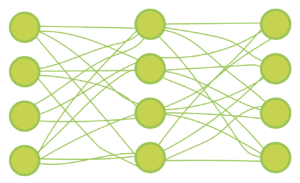Deterministic Decision Tree Data vs. Probabilistic NLP Training Data
What to consider when Developing Your Conversational AI Model
Not all chatbots are using artificial intelligence
Conversation AI has become part of our everyday lives. We encounter it in many forms that we don’t even think twice about. Some of the most advanced conversation AI tools we use daily like the virtual assistants Siri, Alexa, and Google Assistant. We’ve also become accustomed to interacting with it on websites with advanced chat functionality as they guide our experience and answer complex questions.
However, not every chatbot we interact with uses artificial intelligence. In fact, most chatbots are not yet using conversational AI which is why a lot of them have limited functionality. When embarking on a project to enhance or streamline your customer service experience, it is important to take a moment to determine if you need a common chatbot or a full conversational AI solution.
Deterministic Decision Tree Data vs. Probabilistic NLP Training Data
There are important distinctions between chatbots and conversational AI. Most chatbots follow a predetermined flow and use a series of rules to provide responses. The inputs are matched, and an established output is provided. Essentially chatbots follow a deterministic decision tree. While the decision tree can be very complex, each option must be carefully crafted by a person ahead of time. So, if a question doesn’t match the existing rules, the chatbot cannot respond. This can lead to frustration from customers causing them to abandon the site or lead to an overall negative brand perception.

Conversational AI, on the other hand, is probabilistic. It relies on machine learning, natural language processing, deep learning, predictive analytics, and other language models to produce dynamic responses. When properly trained, this method can offer a much better user experience.

Why you should invest Conversational AI
To determine if conversational AI is what is needed for your business, determine what your goal is. Simple rules-based chatbots are great for automatically guiding customers through the navigation of your site or checking the status on an order. They can also usually help with straightforward frequently asked questions. However, if you want to create a dynamic and personalized experience for your customers that stands out from the competition then conversational AI is necessary.
Where you see the ROI
Implementing conversational AI well can reduce your service costs, increase customer satisfaction, and keep customers on your site longer by making the experience more interactive. It can also improve internal efficiency by allowing service reps to focus on the most complex tasks. Here are some examples of where companies are deploying conversational AI:
- Providing your customers with personalized experience
- Implementing a system that can handle complex inquiries
- Giving customers an automated way to schedule or reschedule appointments
- Keeping your customers up to date on constantly changing products and services
- Providing your customers with relevant recommendations based on their questions or search / buying / chat history
If your business is looking for a way to stay ahead of the competition and better connect with customers, then adopting conversational AI is worth the investment.
How to train your model
There are a few key components to effectively training conversational AI. The three big components related to conversational and text-based AI projects are:
- Utterances – ways a customer may ask a question
- Intent – what your customer means when they ask a question
- Entities – keywords that provide more details and context to intents which improve the accuracy of your AI’s responses
Utterances, intents, and entities are ranked and annotated according to a taxonomy which helps ensure that the AI’s responses are relevant. For training a conversational AI it is important to have a lot of available data. Each intent needs numerous utterances to account for the real-world language and the different ways customers will ask questions. As with any AI project, it is important to continuously train your AI to make sure it is constantly improving its understanding of customers’ questions and providing relevant responses.
The Innodata way
Innodata combines a deep understanding of conversational AI data requirements with experienced AI resources and technologies. We deliver high-quality datasets to help train your virtual assistants and chatbots to seamlessly interact, engage, and converse with humans. With over 30 years in digital publishing, we have developed deep expertise in text and language annotation. We work in over 35 languages and in 6 global centers allowing us to understand and take into account the nuances of multiple languages when completing annotations.
Accelerate AI with Precise
Annotated Data
Check out our case study on Training Conversational AI to Provide Customized Movie Recommendations

